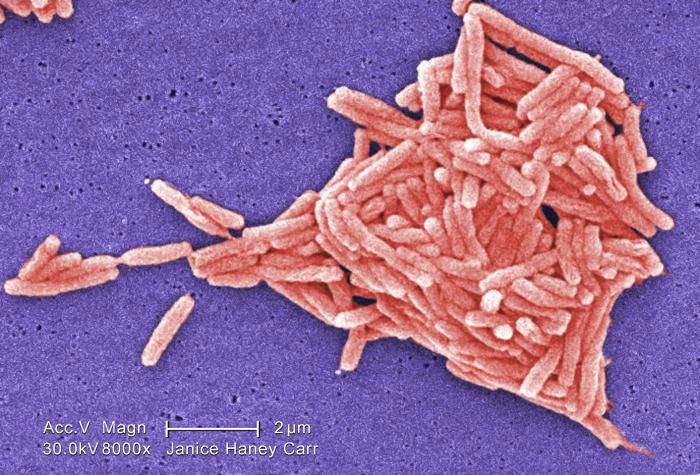
The happiest place on Earth has been plagued with a most unhappy situation: A handful of visitors to the park have come down with a deadly respiratory infection called Legionnaires' disease.
It turns out that the source may be two cooling towers in the theme park. On Saturday, water in the towers tested positive for the bacteria that cause the disease, and the structures have been shut down, the Los Angeles Times reported.
But what exactly is Legionnaires' disease, and why are air-conditioning systems a source for the illness? [5 Things You Should Know About Legionnaires' Disease]
Respiratory disease
Legionnaires' disease is spread by a bacterium, called Legionella, that was first identified in 1976 after 180 people at an American Legion convention in Philadelphia came down with a mysterious type of pneumonia, The New York Times reported a year after the incident. The disease is spread when people inhale water droplets that contain the bacteria. People who come down with the illness may experience fever, chills, a cough and muscle aches, and about 1 in 10 will die, according to the Centers for Disease Control and Prevention (CDC). The disease can be treated with antibiotics, according to the CDC.
People age 50 or older, those with chronic lung issues, and those with other diseases such as diabetes or kidney disease are at highest risk of contracting Legionnaires' disease. About 6,000 people in the U.S. tested positive for the disease in 2015, but there may be many more cases that are never reported, according to the CDC.
Cooling-tower risk
Cooling towers are a major source of the disease, because they provide two things the bacteria need to thrive: a place to grow and a way to enter people's respiratory systems. The huge tanks of warm water in these systems provide an ideal environment for Legionella to thrive. These systems also circulate air, and when water from the tanks evaporates, it forms droplets that spread the disease through the air. Other common culprits include hot tubs, large plumbing systems and water features such as fountains.
Though person-to-person transmission is rare, one case in 2016 suggests it is possible. And in rare cases, people can acquire the disease by inhaling water into the trachea, or having it go "down the wrong pipe," Live Science previously reported. Newborns may also acquire the disease during "water births," Live Science previously reported.
Sign up for the Live Science daily newsletter now
Get the world’s most fascinating discoveries delivered straight to your inbox.
This isn't the first time that Legionnaires' disease has been tied to cooling towers. In 2015, more than a dozen people died and 120 were sickened in an outbreak of the illness in the Bronx in New York City. Ultimately, that outbreak was tied to cooling towers at the Opera House Hotel. And a study presented at the CDC's 66th Annual Epidemic Intelligence Service Conference in April found that 84 percent of 196 cooling towers tested around the country tested positive for Legionella.
Originally published on Live Science.

Tia is the managing editor and was previously a senior writer for Live Science. Her work has appeared in Scientific American, Wired.com and other outlets. She holds a master's degree in bioengineering from the University of Washington, a graduate certificate in science writing from UC Santa Cruz and a bachelor's degree in mechanical engineering from the University of Texas at Austin. Tia was part of a team at the Milwaukee Journal Sentinel that published the Empty Cradles series on preterm births, which won multiple awards, including the 2012 Casey Medal for Meritorious Journalism.









